Yoga; A Natural Approach To Improving Your Health

Yoga is one of the most holistic approaches to invigoration & fitness practices that we probably know of! If you’re curious to see what scientific studies say about yoga, keep on reading. Take a look at the studies listed below along with the Yoga poses that they correlate with:
- Diabetes Risk Reduction & Control
The complex condition plagues the young and old alike. There is no cure for diabetes but the condition can be potentially managed with lifestyle, eating changes and exercises. A BioMed study has found that Yoga offers a likelihood of decreasing weight-related type 2 Diabetes risk factors. Yoga was found to be more effective at weight reduction and inch loss than walking as a measure for controlling diabetes! Try Tree, Bow, Plough & Half Twist poses!*
- Hypertension Management
Though not a life threatening condition by itself, high blood pressure(BP) when not kept in check will cause the heart to overwork and weaken. A Yale study revealed that Yoga interventions resulted in reduction of BP and related cardiovascular deaths. At Medical Center of Central Georgia Study you will find how yoga as a non pharmacologic way to control BP is promising! Try Bound Angle, Bridge, Corpse, Downward-facing-dog & Reclining hero Poses!*
- Cardiac Health
Yoga could helps in boosting the levels of haemoglobin and red blood cells, thins the blood by making platelets less sticky and reduces the clot-forming proteins in the blood. This reduces the risk of clot formation which is the cause of cardiac failure. Yoga breathing techniques regulate our intake of oxygen and could help in keeping our heart healthy. Check out Continuum Heart Institute Study to catch up on the significance of yoga in the modification of cardiovascular risk factors and in the rehabilitation of the post-myocardial infarction patients. Try Mountain, Tree, Boat, Big Toe, Child, Corpse, Sukhasana & Fire Log Poses!*
- Ease Migraines
The study showed a noteworthy decline in migraine headache frequency and other features in patients who practiced Yoga for over 3 months. Try Legs-up-on-the-wall, Bridge, Big toe, Head-to-Knee-forward-bend, Plow & Wide-legged-forward-bend Poses.*
- Neck & Back Pains
A NCCIH funded study at University of Rajasthan has revealed that the practice of Iyengar Yoga by people who had chronic low back pain significantly reduced pain and disability in 6 months. Iyengar Yoga focuses on proper alignment of our body to strengthen the muscles and support the joints. Another study found that 12 weekly yoga classes produced better results than usual medical care for neck and back aches. Try Cat, Child, Cow, Reclining Twist & Extended Puppy Poses!*
- PTSD & Depression Management
Studies have found Yoga as a potentially effective tool to deal with Post Traumatic Stress Disorder; whether it was the Bihar flood victims or Tsunami survivors in Andaman Islands or survivors of South East Asia tsunami . It has also been found to be an ancillary treatment option for patients with depressive disorders Try Corpse, Dolphin, Fire Log, Lion & Legs-up-on-the-wall & Happy baby Poses!*
Invest your time in Yoga to lead better lives because, “When you know better, you do better”-Maya Angelou.
*Results may be experienced differently by different individuals.
This report is developed from clinical studies, research, and customer reviews analyzed by the editors.
Further supporting research and documentation can be found in the “Research” section as well as
the “Disclosure” section of Herbalistreport.
Is It High Time for Holistic Health Approaches?
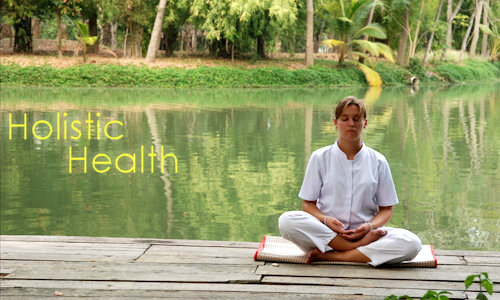
Considering the whole person in healing, holistic health approaches focus on someone’s overall state of being, including on his body, mind, spirit and emotions—all towards optimal wellness. Based on the principles where these approaches are focused into, one can achieve an optimal health if he or she would be able to keep the balance in all of these aspects. The main goal of holistic healing, therefore, is to help someone achieve and gain proper life balance.
What Is Holistic Medicine?
Performed by holistic medical practitioners, holistic health is designed and made to improve someone’s overall health condition, considering all the aspects one has to balance so that his body, mind and spirit will work harmoniously with his systems functioning as a one unit. As you can imagine, people of today have certain imbalances whether on spiritual, emotional or physical and any of such imbalance negatively affects overall condition.
Holistic health approaches are performed by a holistic doctor who has an in-depth knowledge and skills on human anatomy and on both traditional and alternative approaches to natural health. Aside from their knowledge of conventional medication, they are also versed with alternative therapies when helping a patient. So if you are suffering from migraine and you paid a visit to a doctor using these approaches to potential relief, you will be interviewed of the potential causes of your problem rather than only be given with medications to get rid of headache.
A holistic doctor may then ask you of,
- Diet
- Physical activities
- Stress
- Preferred spiritual practice
- Sleeping habits/disorders
- And other health problems
Upon determination of the above, your doctor may recommend a health plan that may involve medications to reduce symptoms and lifestyle changes to get rid of recurrent pain. Because holistic health approaches are based on the belief that unconditional love and support is your main weapon against all diseases, these healing methods equally believe that you are the one responsible of your overall health and well-being and that you have the ability to heal yourself.
What Are the Types of Holistic Health Approaches?
There is a wide range of holistic health approaches used by practitioners in helping you. And for the most part, you will be taught on how to take control of your health by being responsible of your own being and some techniques you will learn including lifestyle changes, proper self-care, including diet and exercise, spiritual counseling and psychotherapy, among others.
There may also be alternative and complementary therapies involved, including chiropractic, acupuncture and naturopathy and modern medications included, such as surgical procedures and Western medicines. A few of the practitioners you may find in a clinic practicing holistic healing techniques are naturopathic doctors, osteopathic doctors, medical doctors and homeopathic doctors, among others, and clinic services may also vary from one to another.
Certainly, holistic health is what everyone desires for, but such isn’t easy to achieve—that is why there are holistic health approaches geared towards the betterment of the body, mind and spirit in order that they work as ‘one’ with balance and harmony for a positive health impact.
What Exercise Has to Do with Improving Sleep
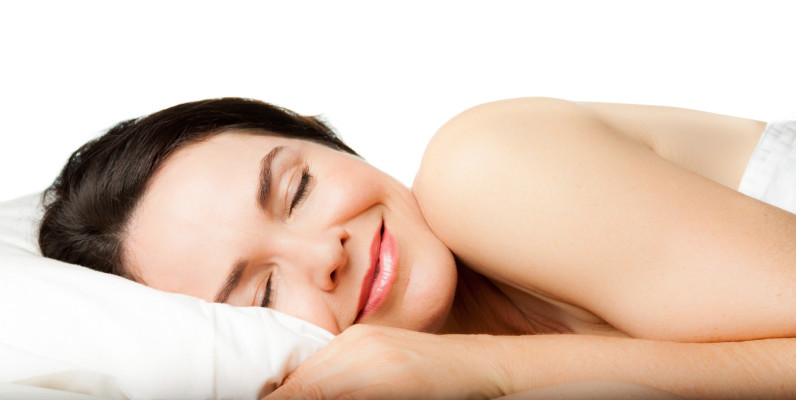
How well you sleep affects how you feel, think and act during waking hours. And if you are suffering from lack of energy, resulting to low productivity and irritability during the day, it may be time to look into your daily routines and review what could be wrong or maybe missing that affects your sleep. Have you looked into your physical activities and considered exercise lately? Did you know that, according to studies, exercise and sleep are correlated in a sense that getting enough of physical activities or exercises can improve sleep? If you want to promote better sleep, check out the following and learn more about it.
Sleep and Exercise: How Are They Linked?
According to the 2013 Sleep America Poll conducted by the National Sleep Foundation, people who exercise on a regular basis can sleep better than the people who do not engage in any, concluding that there is a direct link between sleep and exercise and noting that exercise can dramatically improve sleep, especially for patients suffering from insomnia.
The same survey participated by 1000 respondents (intense exercisers) discovered that these people were best sleepers, while only 17 percent of them reported to having poor sleep and over 50 percent of non-exercisers experienced poor sleep yet more sleepiness at daytime. Part of this data, about 24 percent of light exercisers revealed of having difficulty in sleeping.
Start small, according to experts. If you’re a non-exerciser, start with small steps, like a 10-minute walk every day so that you can improve your night sleep. Perhaps, it is not the amount of time you spend to get back to fitness that will eventually result to better night sleep, but it is in your consistency to performing even basic exercises, such as jogging or walking.
More so, studies suggest that lack of exercise can also put you at a greater risk of developing sleep disorders, including apnea and insomnia. In fact, 44 percent of non-exercisers are at a moderate risk to suffering from sleep apnea.
Based on the above, you can tell for yourself that indeed exercise impact sleep, and so you may want to get started to incorporating even light to moderate physical activities into your daily schedule so that you can achieve better sleep.
But What Is Exercise and Timing It About?
You might have heard that you should not exercise before sleeping. And one thing behind it is that your temperature goes up when you exercise and it then drops after six hours. The cooler your temperature drops the more you will be feeling sleepy, according to the National Institute of Neurological Disorders and Stroke. So overall, take note of exercising at least six hours before hitting the sack.
But don’t worry if you cannot do that because you can still exercise at any time of the day to achieve overall physical health. Just remember, do not engage in exercise the last couple of hours before sleeping, so you won’t stay awake when you have to sleep. Finally, consult your doctor prior to incorporating exercise into your daily routine, especially if you have a pre-existing medical condition.
Top Four Remedies for Natural Muscle Pain Remedies
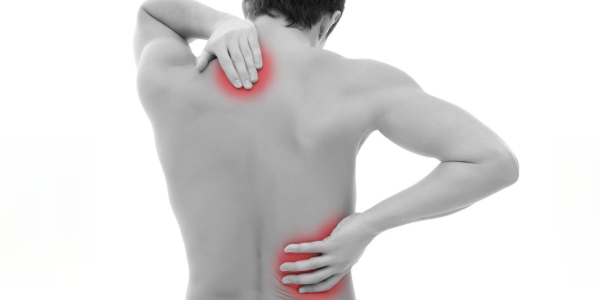
Everyone suffers from muscle pain at certain points in their lives, and for certain reasons, including sports activities, workouts, daily functions or physical condition, among others causes. Thanks to natural muscle pain lessening brought to us by herbs that combat inflammation and get rid of pain, which may also be due to various medical conditions, such as arthritis, fibromyalgia and muscle strains. Check out the following natural remedies for muscle (and joint) pain.*
Four Natural Remedies vs. Muscle Pain
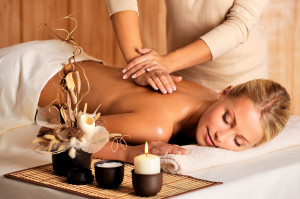 Massage therapy or aromatherapy: Functioning as a type of meditation and relaxation for many people, massage is one of the best natural remedies against muscle pain, especially if you are going for aromatherapy massage. This type of massage involves the use of essential oils, including sage, lavender and chamomile, among others. They work to help get rid of tense and sore muscles and aid to faster recovery from an injury, too. That not only it works to ease from muscle pain, aromatherapy also improves your overall wellbeing because it strengthens the immune system, improves blood circulation and aids in the transportation of vital nutrients to every single cell in the body.*
Massage therapy or aromatherapy: Functioning as a type of meditation and relaxation for many people, massage is one of the best natural remedies against muscle pain, especially if you are going for aromatherapy massage. This type of massage involves the use of essential oils, including sage, lavender and chamomile, among others. They work to help get rid of tense and sore muscles and aid to faster recovery from an injury, too. That not only it works to ease from muscle pain, aromatherapy also improves your overall wellbeing because it strengthens the immune system, improves blood circulation and aids in the transportation of vital nutrients to every single cell in the body.*
- Exercise: Best known for helping you achieve holistic health, exercise is also a natural muscle pain remedy there is. Unlike the common misconception that you should avoid working out when suffering from pain, it actually helps including light to moderate physical activities when you are experiencing muscle pain because it promotes better blood circulation, eventually speeding up the recovery process to getting you back into the game sooner. As you know, your body is designed and made to move, and so lack of movement isn’t of help for it. If you want to get rid of muscle pain, ask your physical therapist and medical practitioner about a suitable workout program for you. Some options may include a yoga class, walking and any simple movements that may help in eliminating muscle pain and soreness.*
- Meditation: Promoting relaxation and easing the muscle from stress, meditation is a good natural remedy against muscle pain. You can practice proper breathing techniques that will aid in better blood circulation and adequate delivery of vital nutrients throughout your body.*
- Acupuncture: It does not only get rid of muscle pain but pain from menstruation, migraines, arthritis and post-surgery and in the lower back. Tiny needles inserted across pressure points in the body can help in releasing the body’s natural painkillers called the endogenous opioids. According a study conducted by the researchers at the University of Maryland School of Medicine, acupuncture had helped people with knee arthritis and that it reduced their pain by up to forty percent in six months with two times a week of sessions, which were then reduced to once a month. It had also helped those suffering from lower back pain, according to the same study.*
Aromatherapy, exercise, meditation and acupuncture—only a few of the best natural remedies to help lessen muscle pain. You can ask your doctor about them and see what works for you.*
*Results may be experienced differently by different individuals.
This report is developed from clinical studies, research, and customer reviews analyzed by the editors.
Further supporting research and documentation can be found in the “Research” section as well as
the “Disclosure” section of Herbalistreport.
The Reality (and Benefits) of Physiotherapy Are Quite Surprising

Commonly perceived ideal only for injured patients, physiotherapy actually suits anyone looking to improve health. No matter your age, you can try it for a variety of benefits, which some we’re going to introduce in this article. Briefly, it is used to manage and prevent any physical problems due to sport, illness and work-related injury. In some cases, it is also used as therapy for the aged who may have had long periods of inactivity resulting from illness or surgery.*
What Is Physiotherapy?
 Additionally, physiotherapy, also called physical therapy, is a healthcare profession aimed at assisting patients and people in restoring, maintaining or maximizing their function, strength, movement and wellness. Physiotherapists are practitioners who conduct it properly due to their in-depth knowledge on how the human body works and hands-on training and skills in assessing, and helping lessen symptoms of injury, illness and any disability. They often work with a team of other healthcare professionals in order to monitor and meet a specific patient’s medical requirements.*
Additionally, physiotherapy, also called physical therapy, is a healthcare profession aimed at assisting patients and people in restoring, maintaining or maximizing their function, strength, movement and wellness. Physiotherapists are practitioners who conduct it properly due to their in-depth knowledge on how the human body works and hands-on training and skills in assessing, and helping lessen symptoms of injury, illness and any disability. They often work with a team of other healthcare professionals in order to monitor and meet a specific patient’s medical requirements.*
So, What Are the Benefits of Physiotherapy?
- It works for all ages, and in fact, this low impact therapy suits even children and seniors. What it does specifically is to strengthen your body, realign your system and promote relaxation through better blood circulation, resulting to a more positive life outlook and view of the world you live in—all because of optimal health!*
- For seniors, the most significant benefit of physiotherapy may be its movement optimization help. Example, you are finding it hard and straining wearing your socks in the morning or getting to bed at night. These two are real world illustrations on how pain affects the quality of life of our elders, not mentioning that even adults can also suffer from the same nagging condition as early as their 30s. It is great news that they can restore normal movement with this therapy.*
- It helps lessen pain for chronic conditions, which can be aggravated by repetitive motion or even lack of physical activity. So if you have a chronic condition, do not think twice but ask your doctor about physiotherapy that can strengthen both the tendons and the muscles, while you’re practicing and learning of ways to prevent movements or actions that worsen the already painful chronic condition.*
- Long hours of sitting and working in front of the computer is a pressing concern in today’s society, and as a result, many people become more prone to acquiring non-sport-related injuries. And because many of us lack in physical activity, our muscles become weak and our bones become brittle. Now to address such issues, physiotherapy is to the rescue because it aids in strengthening the muscles without straining and bones without breaking.*
- It helps in speeding up recovery from surgery. Athletes and bodybuilders, after surgery, need to recover, and they need it fast. For that matter, nothing works better than physiotherapy that can accelerate recovery after a long period of inactivity as well as it can help in faster healing, helping you get back in the game or in bodybuilding faster.*
Certainly, physiotherapy isn’t only for injured athletes and people due to accidents and illnesses but for everyone looking to realign their system, improve their quality of life and achieve optimal health. Consult your doctor about it today!*
*Results may be experienced differently by different individuals.
This report is developed from clinical studies, research, and customer reviews analyzed by the editors.
Further supporting research and documentation can be found in the “Research” section as well as
the “Disclosure” section of Herbalistreport.
Acupuncture and Its Safe Benefits

These Are Exactly the Reasons Acupuncture May Be for You
Acupuncture has been around even before our grandparents were born, and as old as human history, it is still as prominent as it ever was because of its benefits. It rooted from China, where in has been practiced as an alternative approach to healing. Practitioners believe health is the product of the harmonious balance of the yin and yan’s, the complementary extremes of the forces of life called as ‘gi or chi,’ wherein QI is flowing through the body’s pathways or meridians, but can only be accessed by the body’s 350 acupressure points.
Part of this principle is that there will be illness if imbalance is present in these gi and chi, something that acupuncture can address—through inserting (sterile) needles in different pressure points using correct combinations, restoring the energy flow and its balance.*
Now, you’re asking, “So, what is in acupuncture for me?” There are plenty of ‘safe’ benefits to get from this alternative healing practice, and the most important ones, we’re going to highlight in the next section. Check them out.
Health Benefits of Acupuncture
Lessens chronic pain
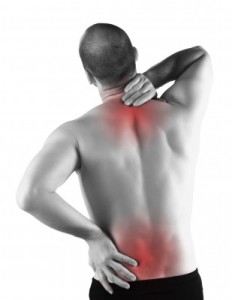 This could be its most significant benefit for most patients who have undergone this type of therapy in addressing pain from arthritis, joint and muscle pain. According to the Archive of Internal Medicine, it can reduce pain by up to 15 percent, especially when used to lessen back pain due to poor sleeping habits, stress and injuries. Also, acupuncture is said to lessen knee pain after surgery; in fact, a study published in the Oxford Journals highlighted how patients with chronic knee pain have found lessening of pain from acupuncture. So if you’re looking for an effective pain management method, try acupuncture.*
This could be its most significant benefit for most patients who have undergone this type of therapy in addressing pain from arthritis, joint and muscle pain. According to the Archive of Internal Medicine, it can reduce pain by up to 15 percent, especially when used to lessen back pain due to poor sleeping habits, stress and injuries. Also, acupuncture is said to lessen knee pain after surgery; in fact, a study published in the Oxford Journals highlighted how patients with chronic knee pain have found lessening of pain from acupuncture. So if you’re looking for an effective pain management method, try acupuncture.*
Reduces stress
Although a little of stress is good, many people suffer from too much of it due to work, life and family pressure, among others. But if you are looking for an effective alternative against stress, you may want to try acupuncture, which balances your body’s energy flow, in order to reduce a significant amount of stress. By being able to reduce stress in life, you can certainly achieve that balance and relaxation you’re looking for.
Following better balance and relaxation is a better quality of life, something you can also get from acupuncture. If you are able to balance your energy system plus a better diet and an improved physical activity, you will be able to see life in a better perspective and live it in the most enjoyable and productive way you know.*
Reduces pain
As discussed, acupuncture is helpful for people suffering from chronic pain, but you don’t have to wait until you suffer from major pain before acupuncture. You can manage pain, including that due to back pain, menstrual pain, joint sprains and carpal tunnel syndrome. And speaking of pain management, people who frequently suffer from headache and migraine also find this Chinese medicinal practice beneficial.*
Speeds up injury recovery
If you’re an athlete and you suffered from injury or has undergone surgery, you can also depend on acupuncture because it works in improving and speeding up recovery from pain due to injury and promoting faster recovery from surgery, allowing you to get back in the game faster.
These are only a couple of benefits acupuncture can offer you with, but they are just the beginning of a long list of reasons you should try acupuncture for total wellness. If you think we missed an important benefit of acupuncture, tell us in the comments. Finally, feel free sharing this article to people who you think might benefit from it.*
*Results may be experienced differently by different individuals.
This report is developed from clinical studies, research, and customer reviews analyzed by the editors.
Further supporting research and documentation can be found in the “Research” section as well as
the “Disclosure” section of Herbalistreport.
The Six Benefits of Chiropractic You May Not Want to Miss
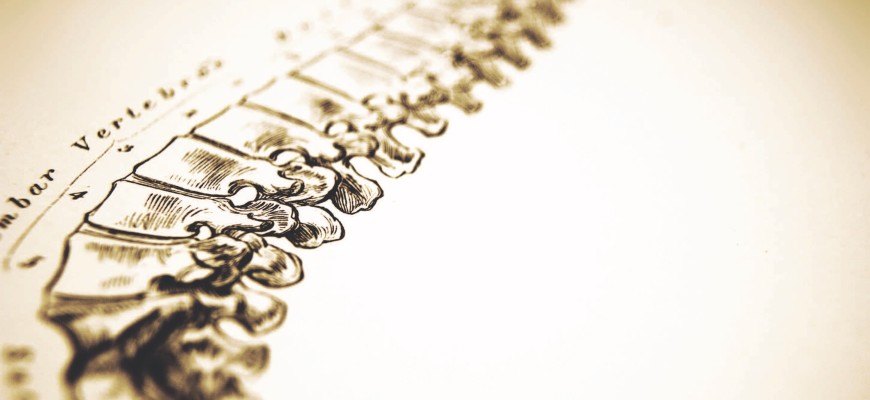
Known as a complementary medical practice, which principles are based on the assessment and the manipulative adjustment of any misalignments in the joints, particularly those located in one’s spinal column which when improperly working can affect one’s overall muscle, nerve and organ health and wellbeing, chiropractic is aimed at adjusting and aligning the spinal system and the same only takes a few cracks to achieving that overall health, which you might be missing in your life. So are you well adjusted?
Spinal Alignment (Chiropractic) Benefits
 You can prevent pain, especially if you have undergone muscle wear and tear due to pressure and stress or if you have been working on a demanding job with rigorous schedule and with high physical demands, including sports.
You can prevent pain, especially if you have undergone muscle wear and tear due to pressure and stress or if you have been working on a demanding job with rigorous schedule and with high physical demands, including sports.
- With chiropractic, you can reduce stress, which affects your productivity and focus at home or at work. Just like others, you might be forgetting paying attention to the impact of stress in your body, and in case you don’t know yet, you will feel stressed mentally and physically if your systems are misaligned. By trying chiropractic, you will feel less tensed, managing stress better.
- Posture or stance is another problem faced by many, and such issue can be addressed by this practice, wherein chiropractors are locating where the misalignment in your spine is and then they will be aligning the spinal column in problem area. By addressing such problem, any curvatures, tilting or inward or outward turning will be addressed helping you stand stronger—only with a better posture. Fact: Carrying yourself with proper posture greatly affects your body’s functions.
- With chiropractic, you will also be able to do your best all the time because it aids in the improvement of your circulatory system and enhances your body’s flexibility. You will also be able to reduce muscle spasm with the decrease in the lactic acid levels in your body. More so, you are going to achieve better health because chiropractic can promote an effective delivery of nutrients to every single cell in your body.
- Chiropractic can also lessen pain, including neck pain, back pain and shoulder pain. All it takes is an adjustment in the spine, and you will be able to get rid of pain you are suffering from in your knees and hips and in others parts of your body, such as a persistent, nagging headache.
- It also improves your brain function, both in the left and right region, as well as promotes the balance of their activities. Therefore, it can also improve alertness and focus and uplift mood.
Definitely, chiropractic is one of the best approaches to holistic healing everyone is trying to achieve and lessen pain, improving brain function and reducing stress, to name some, are within your reach with it. If you want holistic health and these benefits, find the best chiropractor in your community or online for a chiropractic session. But before doing so, consult your doctor, especially if you have an underlying spinal problem today!

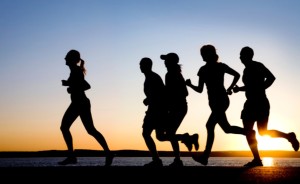

Recent Comments